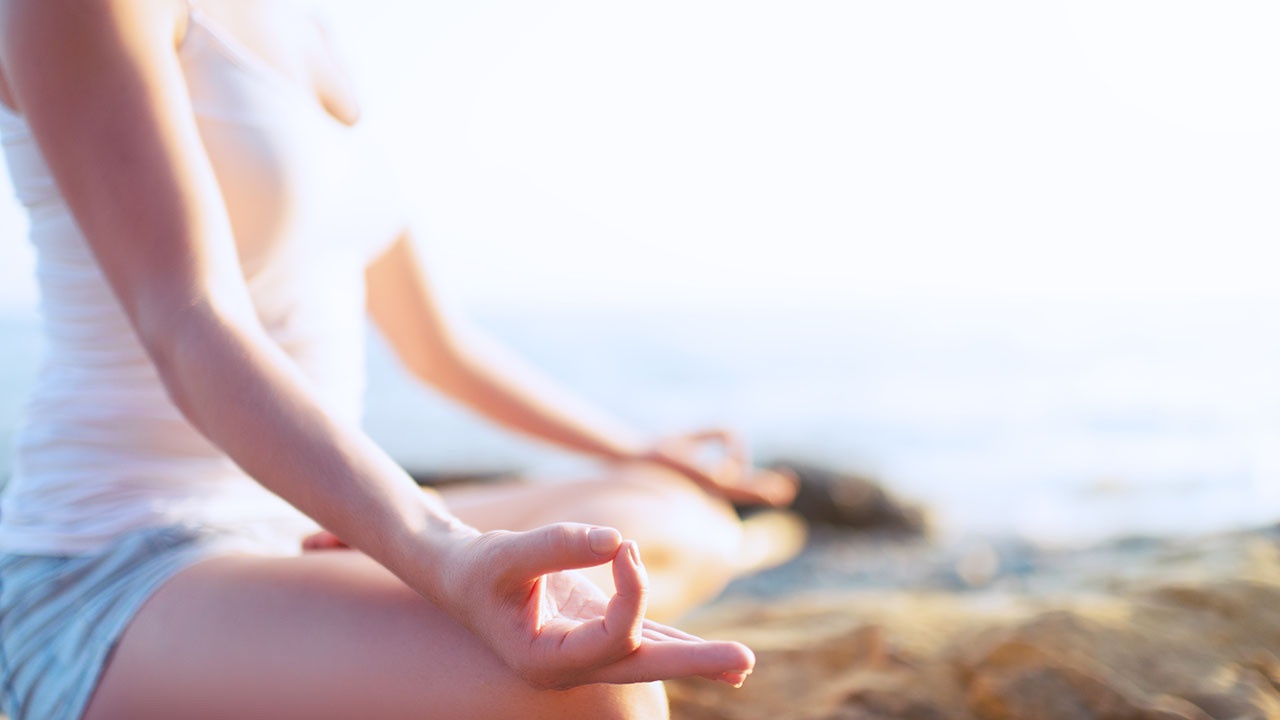What's A Mudra?

A mudra is a symbolic gesture used in yoga or meditation. It can involve the whole body, but is usually done with the hands and fingers to stimulate different responses such as healing, emotion or spiritual connection.
Why would you use mudras?
Translated from Sanskrit, mudra means 'energy seal'. In yoga philosophy, we use poses such as downward dog or forward fold to direct energy (prana) in the body. The fingers are considered to be like electrical circuits so mudras can help influence that flow of energy.
The left side of your body is feminine, the right side masculine, and each finger represents an element:
- Thumb - Fire (agni)
- Index finger - Air (vayu)
- Middle finger - Ether (akash)
- Ring finger - Earth (prithvi)
- Little finger - Water (jal)
Yoga philosophy and it's health system, ayurveda, consider everything in the universe - including our body - to consist of these elements in different variations. If there becomes an excess or lack of any of these elements it can cause imbalance in the body which causes disease. If we can restore the balance, our body is in its best state to restore and heal itself.
For example, if there is too much fire it can lead to inflammation in the body, if there is too much water it can reduce the fire - the element associated with digestion/burning up food - and lead to digestion issues.
From a scientific perspective, the hands and fingers are rich in nerves that send signals back to our brain via our nervous system. The brain triggers hormone production, movement, the regulation of other systems in the body... so you can see how stimulating acupressure points in the hands could have the potential to influence your health.
Whether you believe in it or not, at the heart of it all, it's about finding balance in your mind and body and using these mudras can help with this.
Some commonly used mudras in yoga include:
Anjali Mudra
Also known as hands in prayer position, this mudra connects both sides of the body - left and right hemispheres of the brain. Fingertips, thumbs and base of the hands should lightly touch with centre of palms slightly apart in front of the heart (fingers can be together or apart). This space in the centre is held to receive knowledge and wisdom, and the mudra represents love, gratitude, connection and respect towards the universe and also to yourself.
Gyana/Chin Mudra
Commonly used in seated meditation, this mudra is a gesture of knowledge, enhancing knowledge and creativity.
- Arms at the sides of the body, elbows bent
- Palms are rotated upwards with thumb and index finger touching
- The other three fingers stay connected together outstretched
- Backs of the hands can rest on the knees for a more grounding connection
Kali Mudra
A mudra that we can use to feel empowered, strong and shed negativity, Kali is the goddess of destruction, death and transformation - but not in a scary way! She destroys things dark to make way for the light, so visualise her when you use this mudra.
- Interlace your hands together with your left thumb on top of right
- Extend your index fingers together
- Reach and extend arms above the head
Dhyana Mudra
This gesture can be used to invoke calmness and focus, especially in seated meditation.
- Place hands in your lap stacked on top of each other with palms facing up, left hand on the bottom
- Tips of the thumbs lightly touching to create a bowl shape
Image / DepositPhotos









